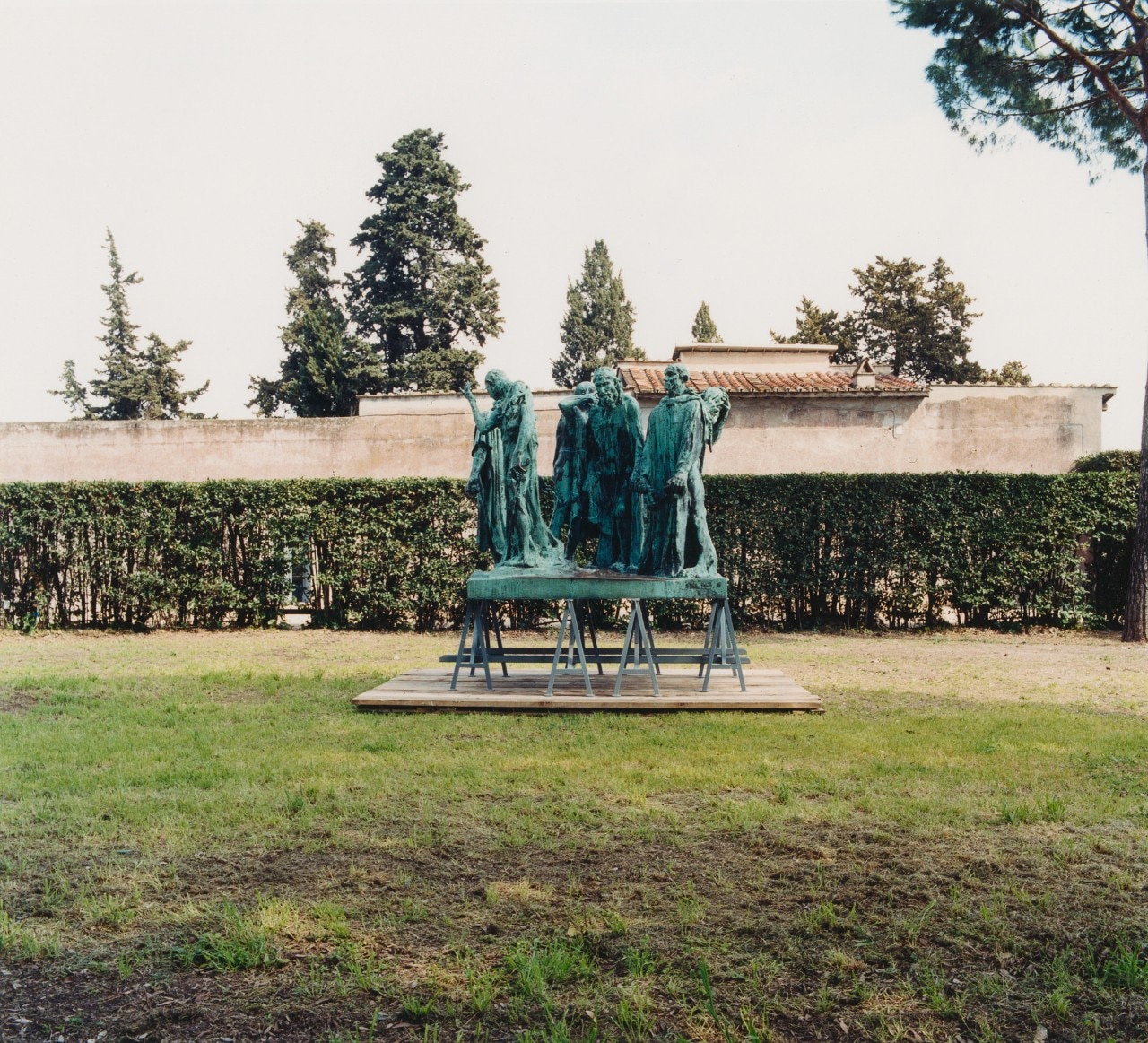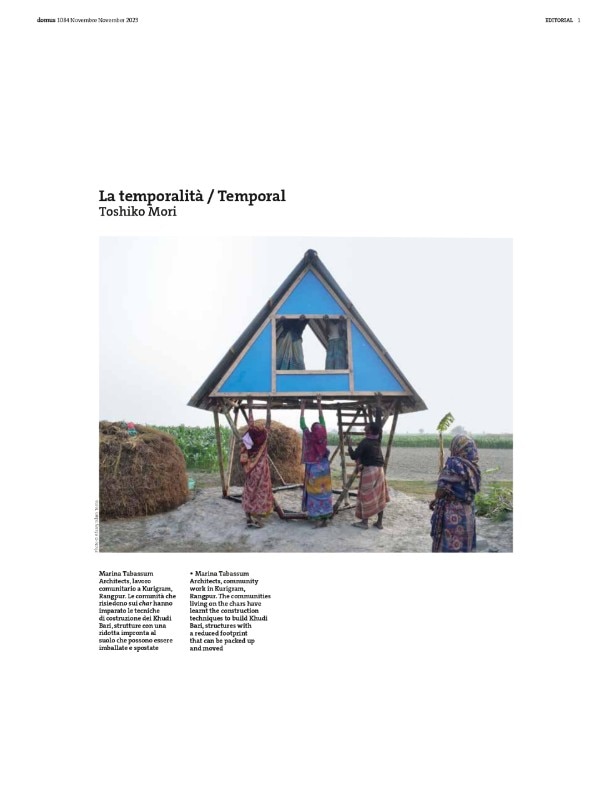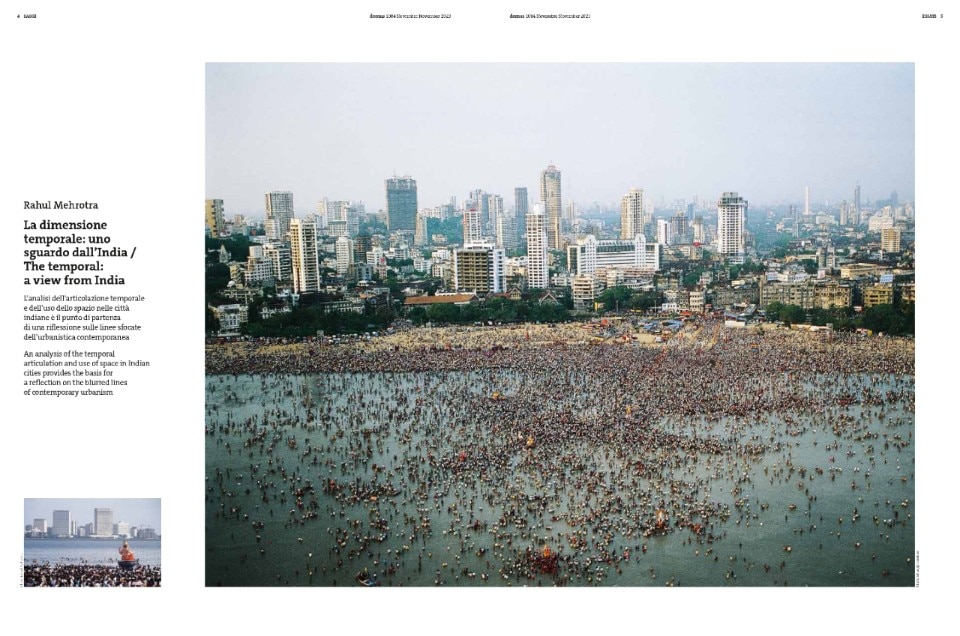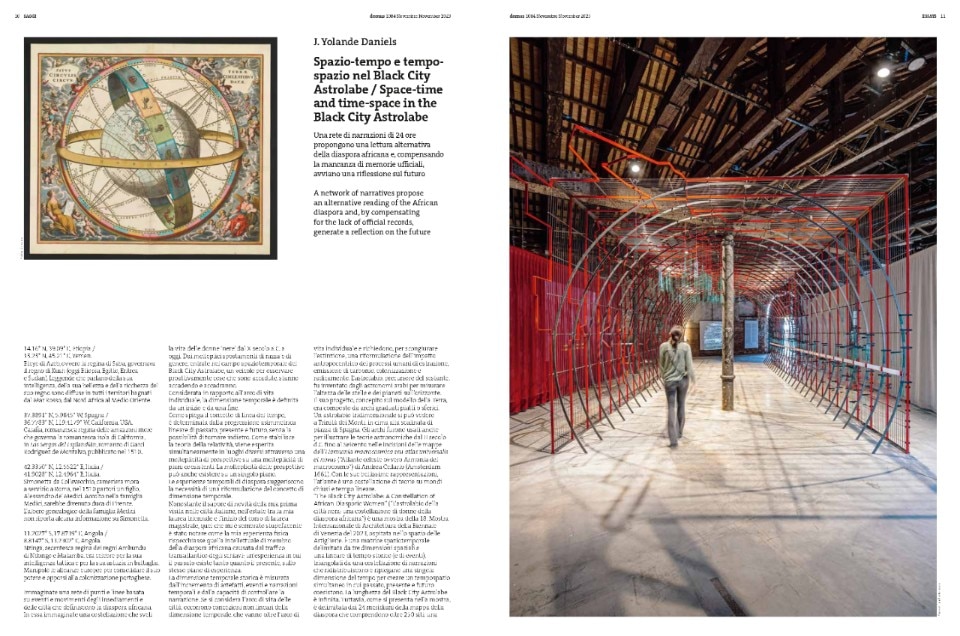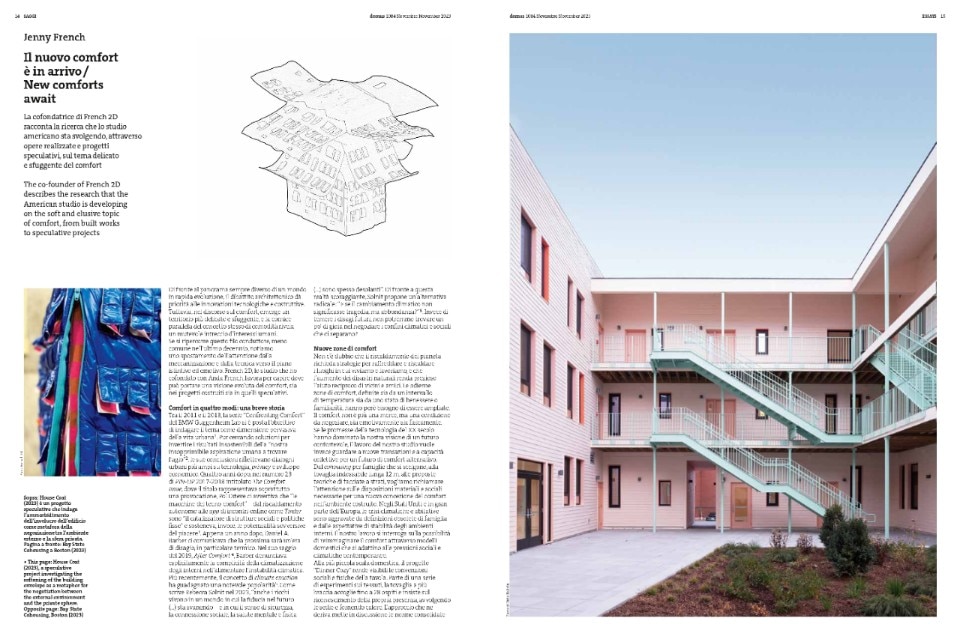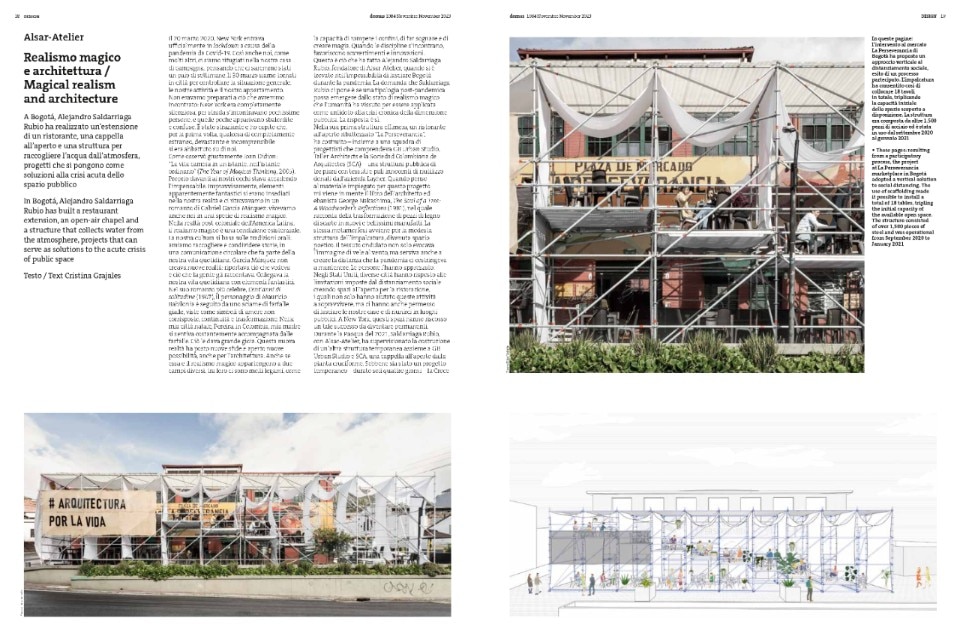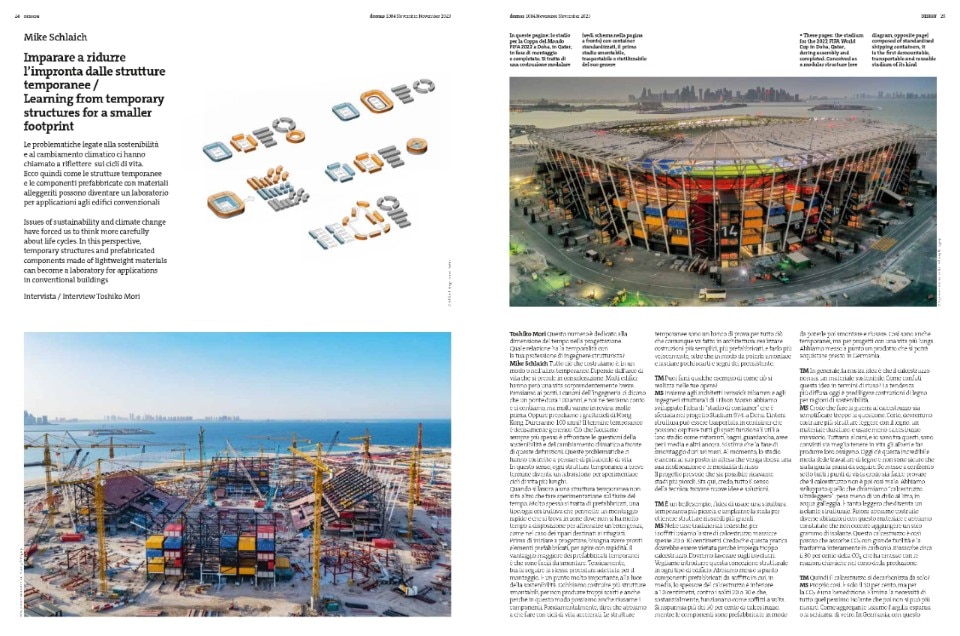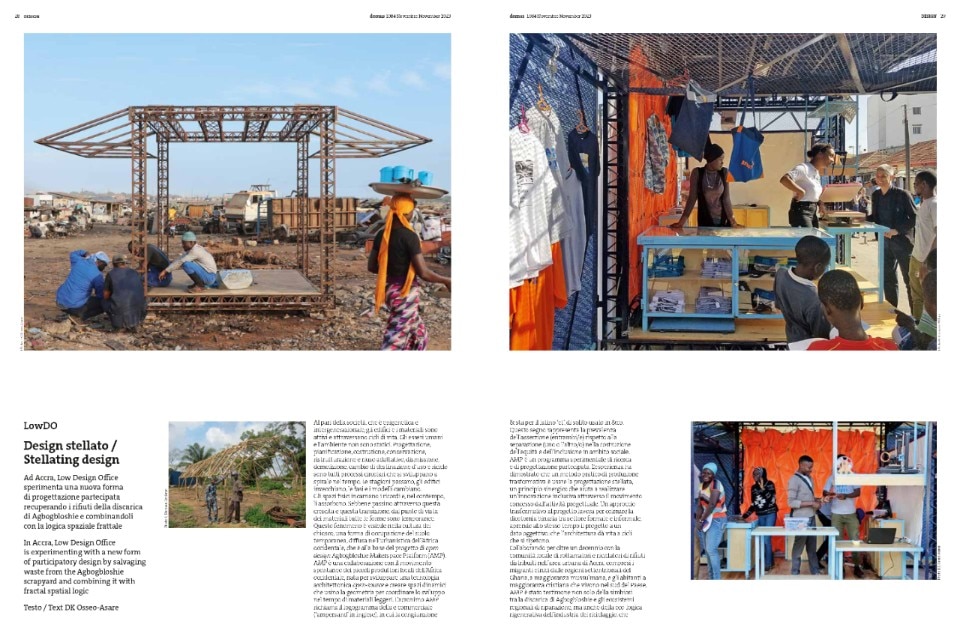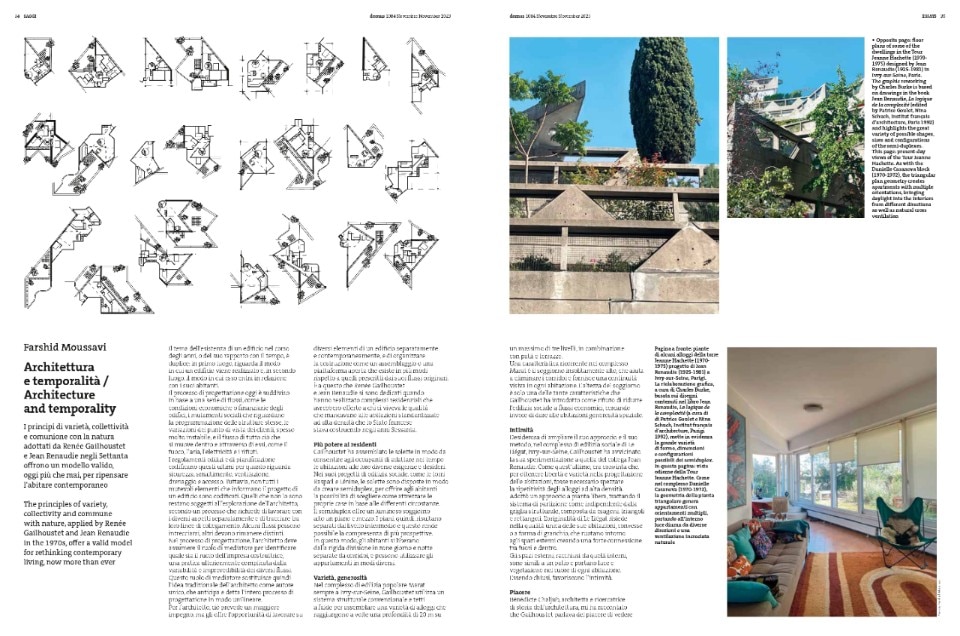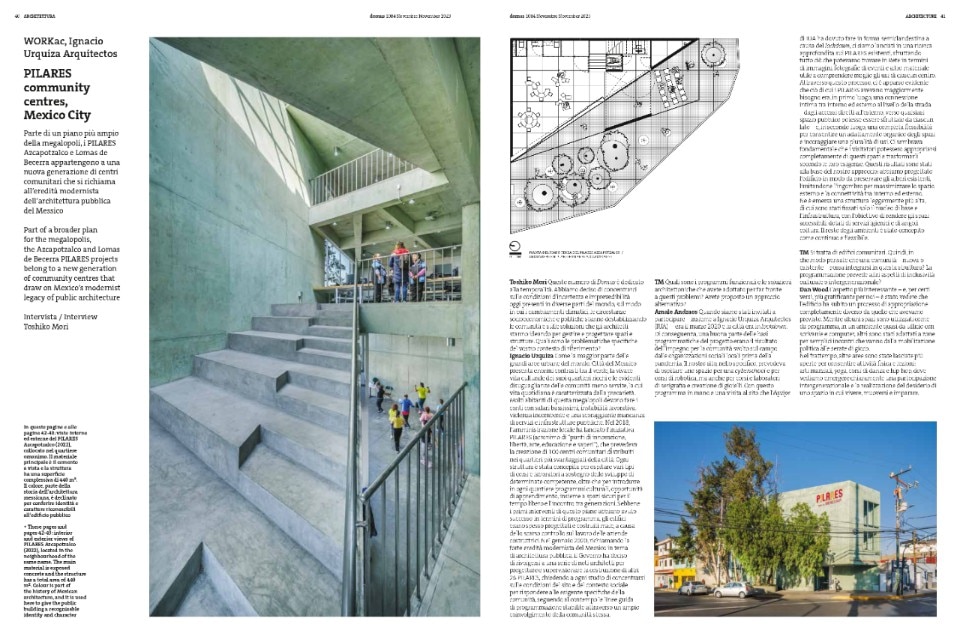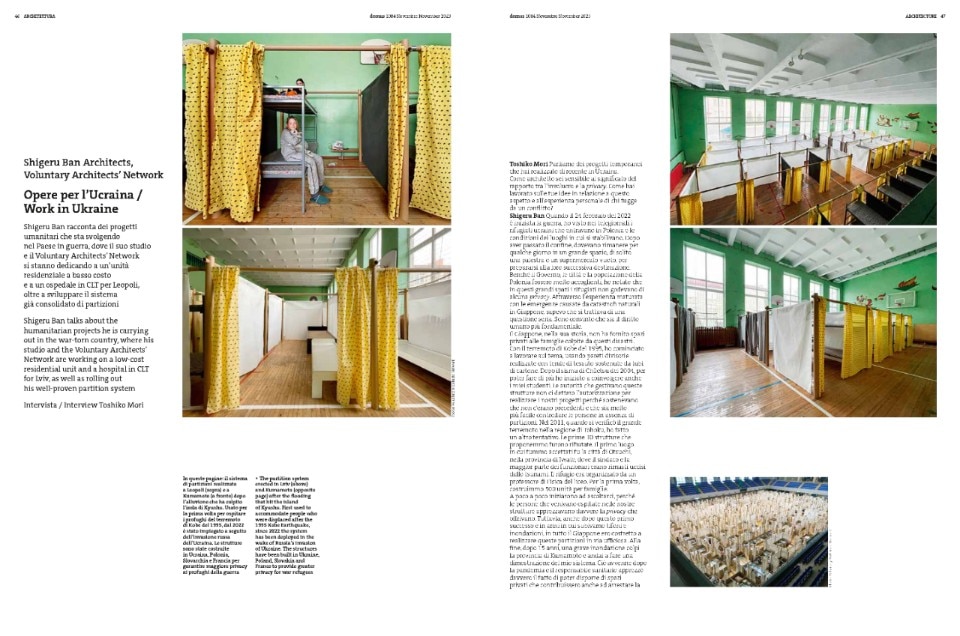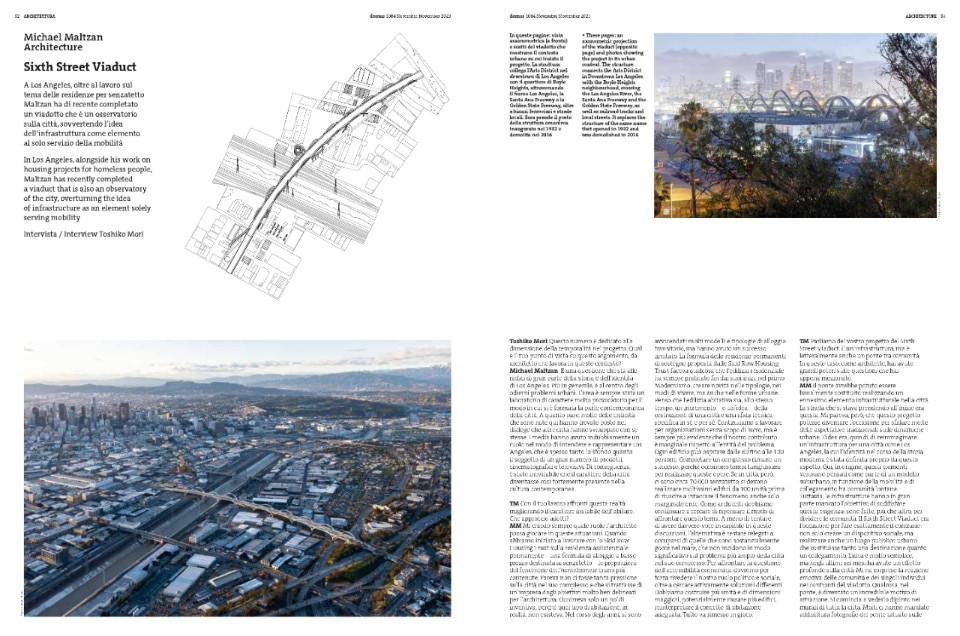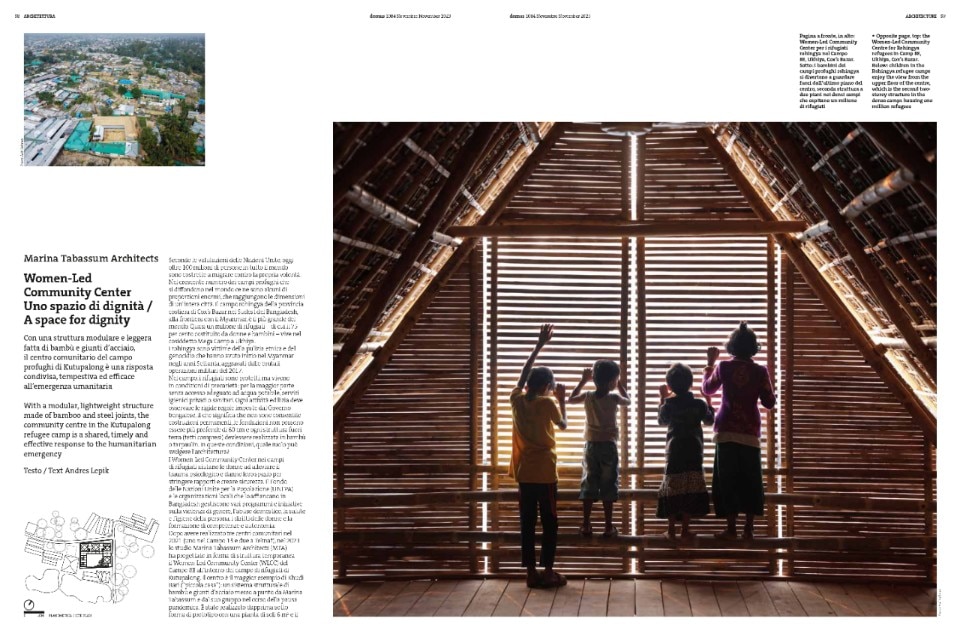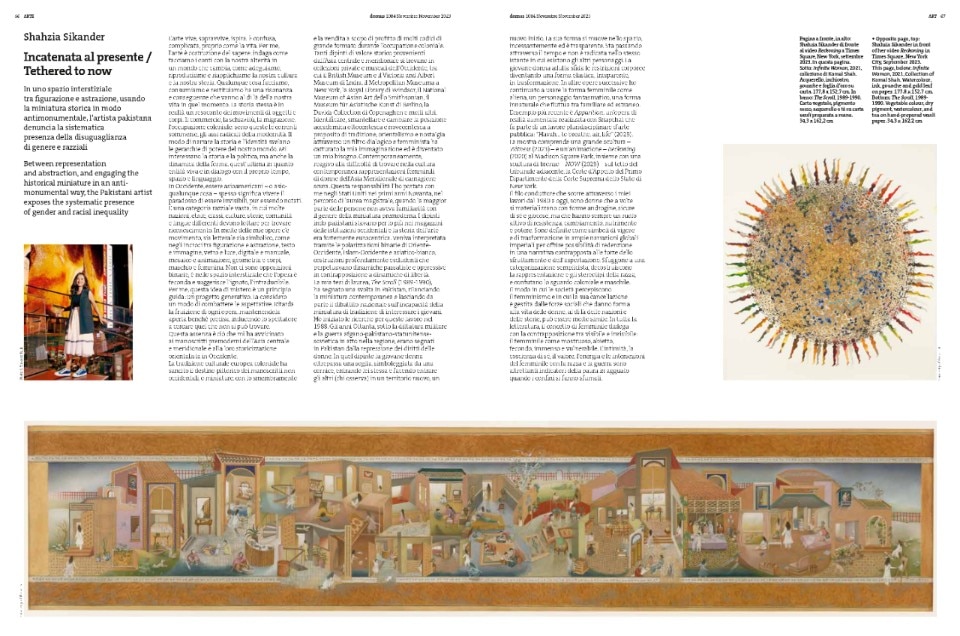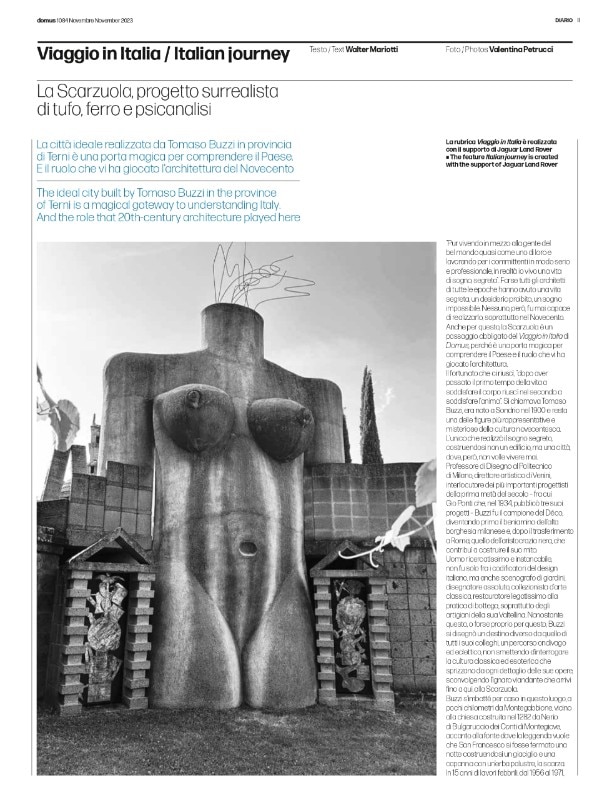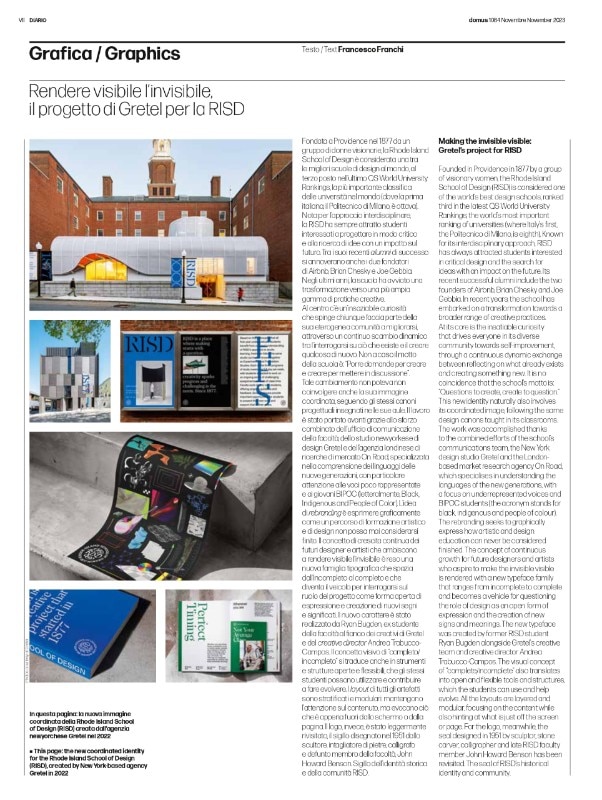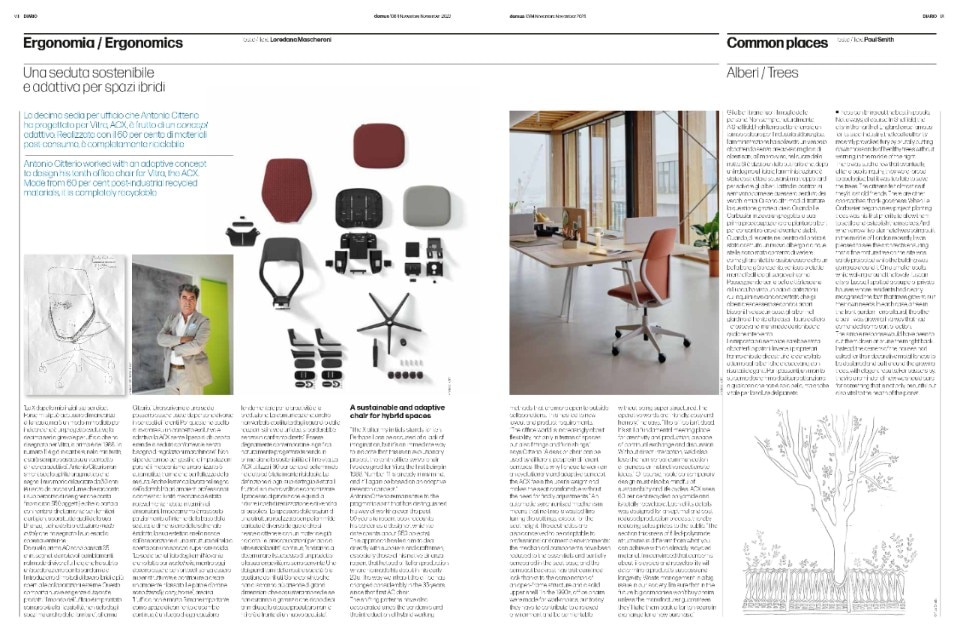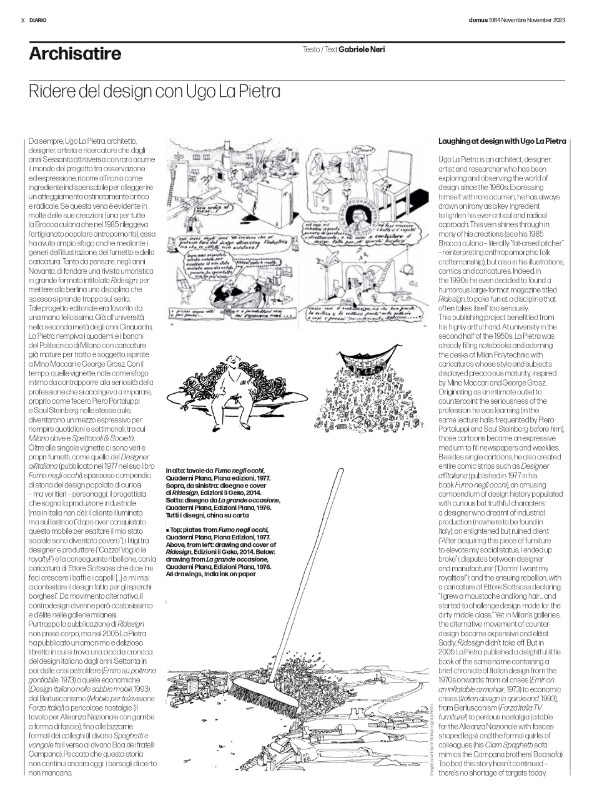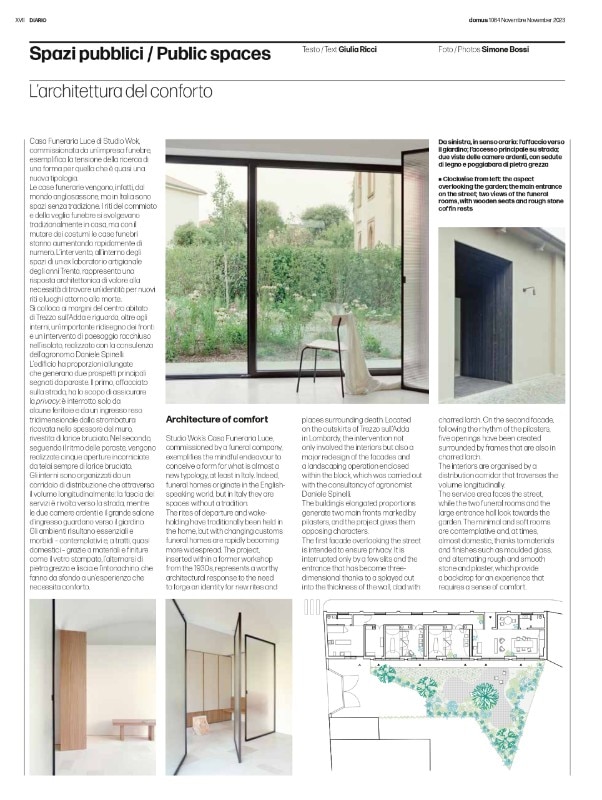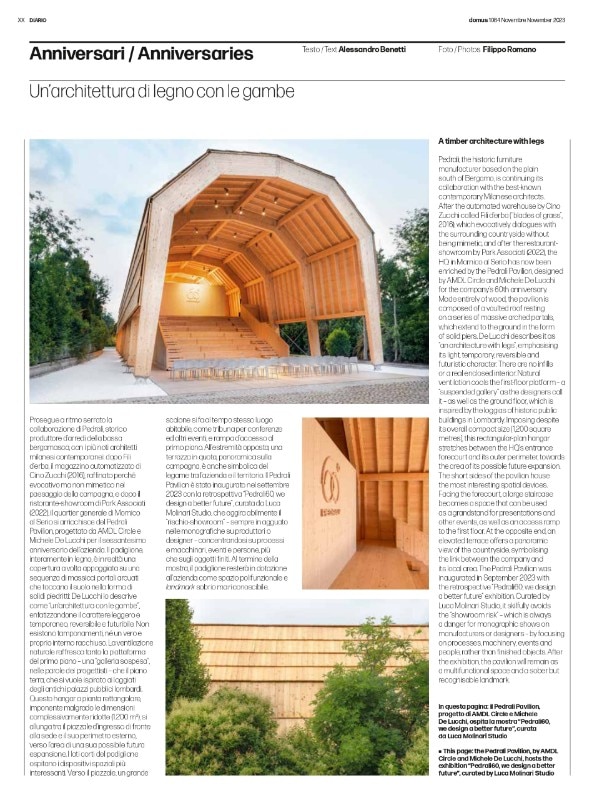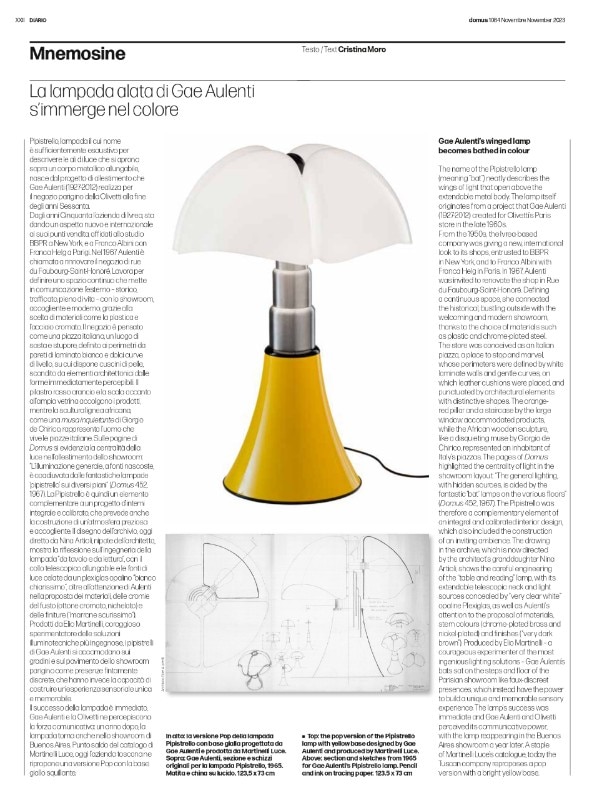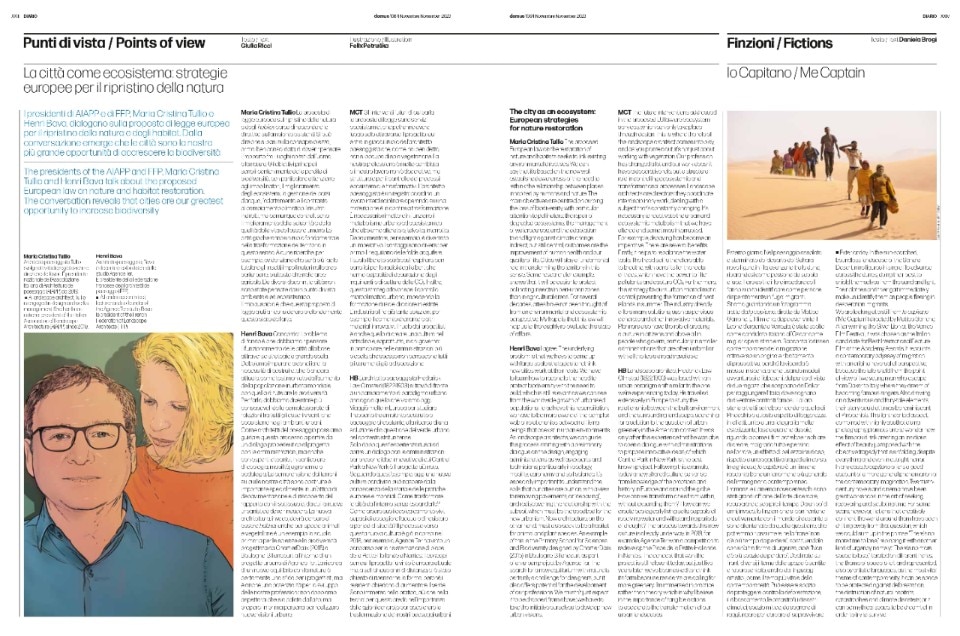For Domus’s November issue, guest editor Toshiko Mori proposes a reflection on the dimension of time and its influence in the field of design and the arts. In her editorial, she talks about the acceleration that change had in the past few decades, which was exasperated by the “climate, financial, socio-economic, political or cultural identity, and value crisis.” In our existences, this phenomenon has caused the concept of permanence to be erased and put into the forefront an awareness of the instability of things.
After the guest editor’s editorial, an essay by Rahul Mehrotra – Professor of Urban Design and Planning at Harvard GSD and Founder of RMA Architects – talks about Indian cities starting from an analysis of the temporal articulation and use of space. The second essay, by New York-based architect, designer, and professor J. Yolande Daniels, is about The Black City Astrolabe, on display at the Biennale Architettura 2023: a tridimensional map and a 24-hour network of narratives piece together the African diaspora of women.
Architect and Co-Founder of French 2D Jenny French reflects on the delicate and elusive topic of comfort through a series of completed and speculative projects by the studio. Farshid Moussavi, architect, Professor at Harvard GSD, and Founder of the FMA studio in London, writes about the residential complexes designed in the 1970s by Renée Gailhoustet and Jean Renaudie in Ivry-sur-Seine. The principles these works stand for – variety, collectivity, and commune with nature – offer a valid model for rethinking contemporary living.
The entire evolution of science would suggest that the best grammar for thinking about the world is that of change, not of permanence. Not of being, but of becoming. (…) We can think of the world as made up of things. Of substances. Of entities. Of something that is. Or we can think of it as made up of events. Of happenings. Of processes. Of something that occurs. Something that does not last, and that undergoes continual transformation, that is not permanent in time.
Carlo Rovelli, The Order of Time, Riverhead Books, New York 2018
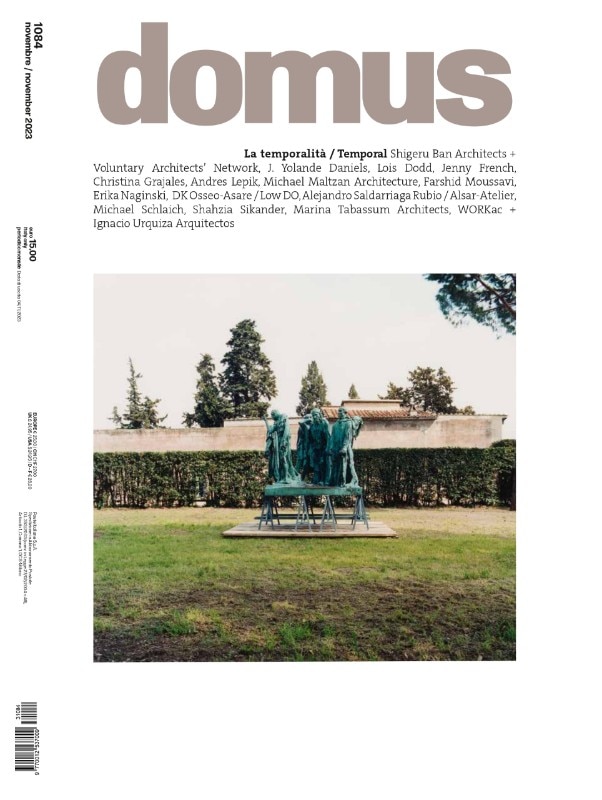
The Architecture section presents two new plans for the community centers PILARES by WORKac and Ignacio Urquiza Arquitectos in Mexico City; the humanitarian projects in Ukrain by Shigeru Ban Architects and Voluntary Architects’ Network; Sixth Street Viaduct in Los Angeles, an infrastructure by Michael Maltzan Architecture designed to become a collective place; and a women-led community center (WLCC) by Marina Tabassum Architects in Bangladesh.
The pages dedicated to Design feature three projects by Alsar-Atelier in Colombia; a new form of participatory design proposed by Low Design Office (LowDO) in Ghana; and the work of Structural Engineer Mike Schlaich on the issues of sustainability and climate change, reflecting on the life cycles of materials.
The Art section stars Shahzia Sikander and Lois Dodd. Shahzia Sikander, a Pakistani-born artist, narrates her reinterpretation work on historical miniatures in an anti-monumental way, exposing the systematic presence of gender and racial inequality in society. Then Toshiko Mori interviews American artist Lois Dodd, whose work, realized over the past 70 years, focuses on the landscapes of Maine and explore the fascinating and complex everyday life.
The Diario is dedicated to current events, and as usual it opens with the column Italian Journey by Walter Mariotti. Domus’s Editorial Director stops in the ideal city built by Tommaso Buzzi, La Scarzuola, in the province of Terni. Francesco Franchi, in his column Graphics, talks about the new coordinated identity of the Rhode Island School of Design (RISD) created by the New York-based agency Gretel in 2022. Loredana Mascheroni delves into ACX, the new office chair by Antonio Citterio for Vitra. In Archisatire, Gabriele Neri shows the irony of Ugo La Pietra. Among the projects, Giulia Ricci presents the Casa Funeraria Luca in Trezzo sull’Adda by Studio Wok, a design based on the concept of comfort. Alessandro Benetti writes about “aa timber architecture with legs:” the new Pdrali Pavillion designed by AMDL Circle and Michele De Lucchi for the Bergamo-based manufacturer. In Mnemosine, Cristina Moro presents the new pop version of the Pipistrello lamp designed by Gae Aulenti in 1965 and produced by Martinelli Luce.
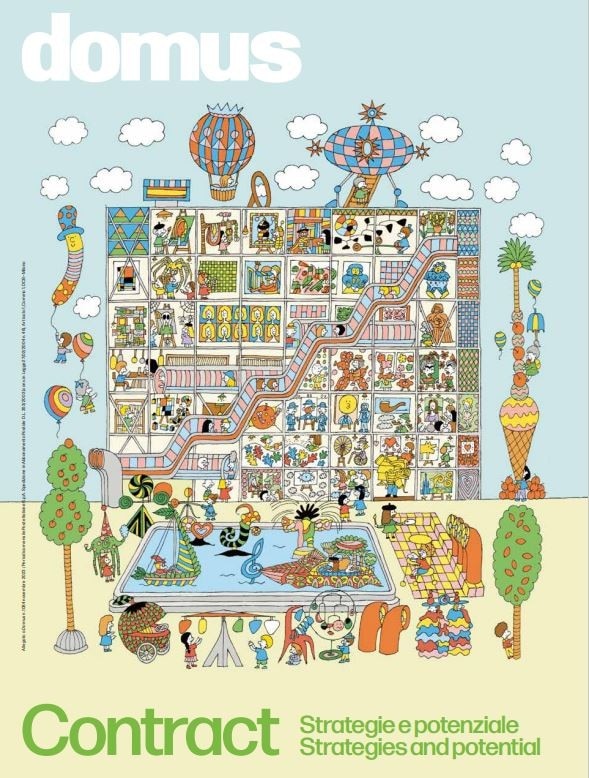
For the column Points of View, Giulia Ricci converses with AIAPP President Cristina Tullio and Agence Ter Founder and FFP President Henri Bava about the proposed European law on nature and habitat restoration. This double interview reveals that cities are our greatest opportunity to increase biodiversity.
This month’s issue, Domus 1084, comes with the insert Contract with a cover featuring a work by South Korean illustrator Ami Shin. The publication follows four main cornerstones of design: housing, offices, hospitality, and the world of boating.


